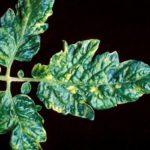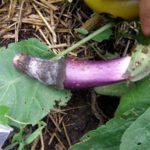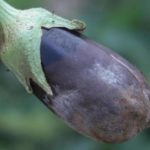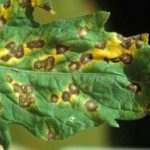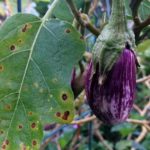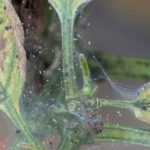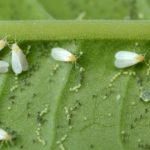Among the vegetables, favorites used for summer salads and winter harvesting, not the last place is eggplant. Nutritional value and unique perception of spices is highly valued not only by professional chefs, but also by ordinary housewives. Therefore, in their gardens, many grow blue fruit, but growing eggplant is troublesome and not every gardener can boast of a large crop. Like other plants, eggplant and its seedlings are susceptible to various diseases. The article discusses the main ones, as well as provides methods for combating, including folk, against diseases.
Table of contents
The main diseases of eggplant and seedlings
Eggplant is a capricious crop, and even with proper care, plants can be affected by various diseases. Knowing what to do and how to deal with misfortunes, plus an instantaneous reaction and properly selected treatment tools will help to localize the problem and prevent the spread of pathogens throughout the site.
What to process against late blight
Charaaakterizuyutsya education on the leaves of rusty spots with yellowish or pale green framing. Breeding fungus infects the stem. In rainy weather a whitish plaque can be found on the bottom of the leaf, which is a sign of sporulation. With the development of late blight infection of the fruit occurs, which become covered with brown spots and deform.
Existing drugs for late blight are divided into 2 types: for the prevention of disease and treatment.The most popular means of biological origin: Baktofit, Fitosporin-M. If the treatment was ineffective, apply chemical solutions: Thanos, Acrobat, Ridomil Gold.
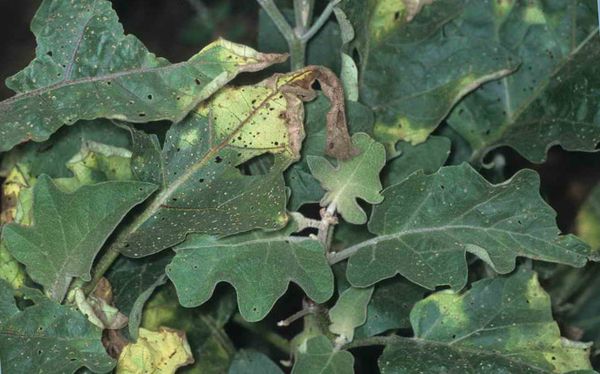
How to deal with tobacco mosaic
Viral disease, recognized by characteristic spots on the leaves. Light green blotches are located near the veins, with time they grow and merge. At the late stage, the middle of the hearth darken and die. Underdeveloped fruits with low taste qualities are formed on the affected bushes.
As a preventive measure, spraying the bed 1 time in 10 days with a milky solution (1 l of milk and 20 grams of grated soap) is carried out. Not less effective are: Fitosporin and Uniflor-micro.
White rot
Fungal disease, mainly due to excess moisture in the air and soil. The reason may also be covered in cold weather when planting seedlings. The fungus infects the root system of eggplant,as a result, whitish plaque forms on the stem. Violation of nutrient intake and developing microorganisms lead to the death of the shoot.
As a preventive measure, it is recommended to powder a bed of wood ash or chopped chalk once in 10 days. If any lesions are found, remove them and dispose of them.
- Tobacco mosaic on the sheet
- White fruit rot
- Gray rot on eggplant
What to do with gray mold
Recognized by the characteristic dark watery spots that cover the leaves, stalk and even fruit. The ideal environment for the development of a fungal infection is heat (+ 20 ° C) and high humidity (air and soil). Spores persist in the ground for 2 years, infecting subsequent crops, so it is important to carefully harvest plant waste from the garden and disinfect.
The following agents are used for treatment: Thanos, Fundazol, Bayleton, Acrobat.If you can not stop the reproduction of the fungus, then the bush must be removed from the site and disposed of by burning.
Black bacterial spotting
The disease can be identified by black spots on the sheets and a yellow border. Over time, the affected area increases, and convex areas with watery edges appear on the fruit. Sores covered with vegetables become unsuitable for consumption. The disease is rapidly developing at high humidity and a temperature of about + 30 ° C. The source of infection can be both seeds and soil, so disinfection is carried out before planting.
As a preventive measure and treatment, the beds are sprayed with Bordeaux mixture, Hom, Oxyh, Acrobat.
Blackleg
Signs of the disease are considered: the formation of constriction on the root neck and wilting of the plant. In identifying the disease, it is necessary to treat the bush with Trichodermine. If the treatment does not give a result, the escape is removed from the bed and burned. The soil must then be decontaminated in order to localize the affected area.
Black leg is a fungal infection that is transmitted through infected seeds and soil.
- Bacterial spotting on an eggplant sheet
- Bacterial spotting on eggplant
- Black leg seedlings
The main pests of eggplant
Insect pests can also significantly reduce yields. The danger is that the larvae and the parasites themselves easily survive the winter in plant debris and soil. Experienced gardeners, for good reason, advise disinfecting all seed and soil before planting. By spending a minimum amount of time and money on preparation, it is possible to avoid infection of young shoots and ripening fruits.
How to get rid of aphids
The danger of pests lies in their ability to affect not only young shoots, but also adult fruiting bushes. The population of parasites is increasing at an incredible rate, so you should not postpone processing. You can recognize the problem by the withered bush species, twisted leaves, fallen ovaries.
Prevention:
- choice for planting illuminated and well-ventilated area;
- soil moisture adjustment;
- disinfection of seeds and soil before planting;
- weed control;
- removal of affected leaves.
Control measures
With the rapid detection of aphids in the greenhouse, you can spray planting infusion of onion peel (tobacco dust, potato tops). If the affected area is significant enough, no special drugs can not do (Akarin, Fitoverm).
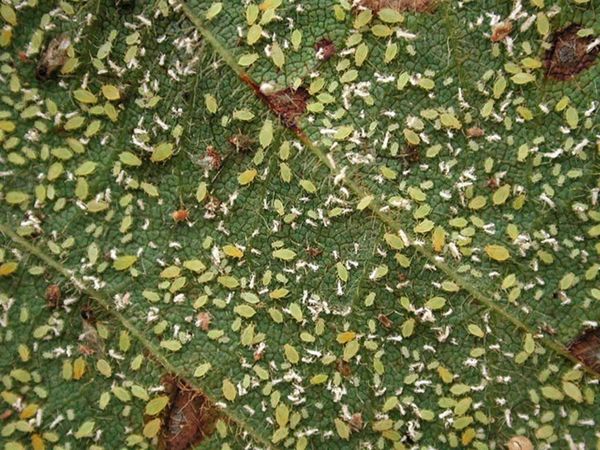
Spider mite
The habitat of the parasite is the lower part of the leaf. For the extraction of cellular juice, spider mite damages the leaves, tightening them with a net. Insect differs by gluttony, so it is not worth delaying with processing. In just a few days he is able to destroy a bush.
Prevention:
- thorough cleaning of beds from garbage and plant debris in the fall;
- digging up the soil before frost;
- timely weed control.
Control measures
In case of mass lesions, it is necessary to treat the beds using special preparations: Neoron, Aktellik, Konfidor, etc. The procedure is repeated several times with an interval of 10 days.
- Spider mite on eggplant
- Spider mite close up
- Whitefly on eggplants
White fly
Danger for eggplant are the larvae of the whitefly. They are laid by the insect on the back of the leaf. Leaves first look wilted, then dry and fall. The larvae drink the juice intensely, depriving the plant of strength.
Prevention:
- disinfection of the site and seeds;
- timely weed control.
Control measures
This can be done with the help of: Citzkor, Actellik, Fufanon.
Knowledge helps to quickly recognize the symptoms of a problem, which will give an opportunity to gain time to solve it. Then hopes for a bountiful harvest will not be ghostly.

